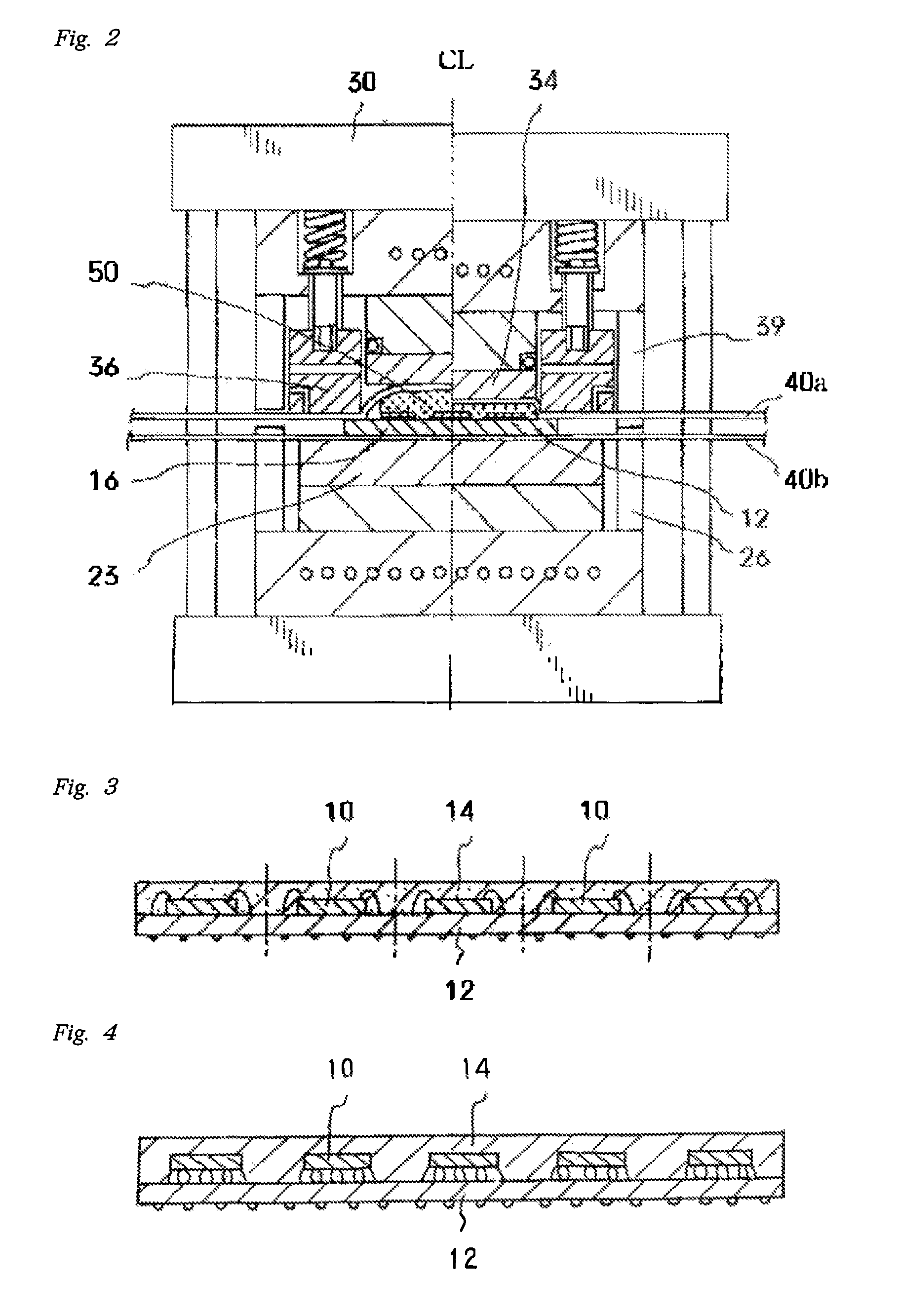Semiconductor device and method of manufacturing thereof
a semiconductor and semiconductor technology, applied in semiconductor devices, semiconductor/solid-state device details, electrical devices, etc., can solve the problems of forming voids, difficult to accurately control sealing-resin coatings, and breakage of wires and contact between wires, so as to reduce warping of semiconductor chips and printed circuit boards, reduce manufacturing costs, and improve sealing
- Summary
- Abstract
- Description
- Claims
- Application Information
AI Technical Summary
Benefits of technology
Problems solved by technology
Method used
Image
Examples
example 1
Practical Example 1
[0059]In the present practical example, a semiconductor device of the type shown in FIG. 3 was used. More specifically, (8 mm×14 mm) semiconductor chips 10 were fixed to a (70 mm×160 mm) printed circuit board made from a BT resin via a 35 μm-thick epoxy-resin die-bond agent layer. The printed circuit board was comprised of a laminated structure formed by applying an 18 μm-thick copper foil via an epoxy-resin adhesive layer having a 17 μm thickness onto one side of a 200 μm-thick BT resin film. Circuit patterns were then made from the aforementioned foil. Portions required for wire bonding of the circuit patterns were removed. The circuit patterns and bumps (not shown) of the semiconductor chips were electrically interconnected and wire bonded via 48 gold bonding wires. In total, 54 semiconductor chips divided into 3 blocks of 18 chips in each were secured to the printed circuit board and formed into respective wire patterns by wire bonding.
[0060]The hydrosilylatio...
example 2
Practical Example 2
[0061]A semiconductor device was prepared in the same manner as in Practical Example 1 with the exception that a hydrosilylation-curable liquid silicone rubber composition (B) was used instead of the hydrosilylation-curable liquid silicone rubber composition (A). Characteristics of the obtained semiconductor devices are shown in Table 2.
PUM
| Property | Measurement | Unit |
|---|---|---|
| torque | aaaaa | aaaaa |
| torque | aaaaa | aaaaa |
| viscosity | aaaaa | aaaaa |
Abstract
Description
Claims
Application Information
 Login to View More
Login to View More - R&D
- Intellectual Property
- Life Sciences
- Materials
- Tech Scout
- Unparalleled Data Quality
- Higher Quality Content
- 60% Fewer Hallucinations
Browse by: Latest US Patents, China's latest patents, Technical Efficacy Thesaurus, Application Domain, Technology Topic, Popular Technical Reports.
© 2025 PatSnap. All rights reserved.Legal|Privacy policy|Modern Slavery Act Transparency Statement|Sitemap|About US| Contact US: help@patsnap.com



